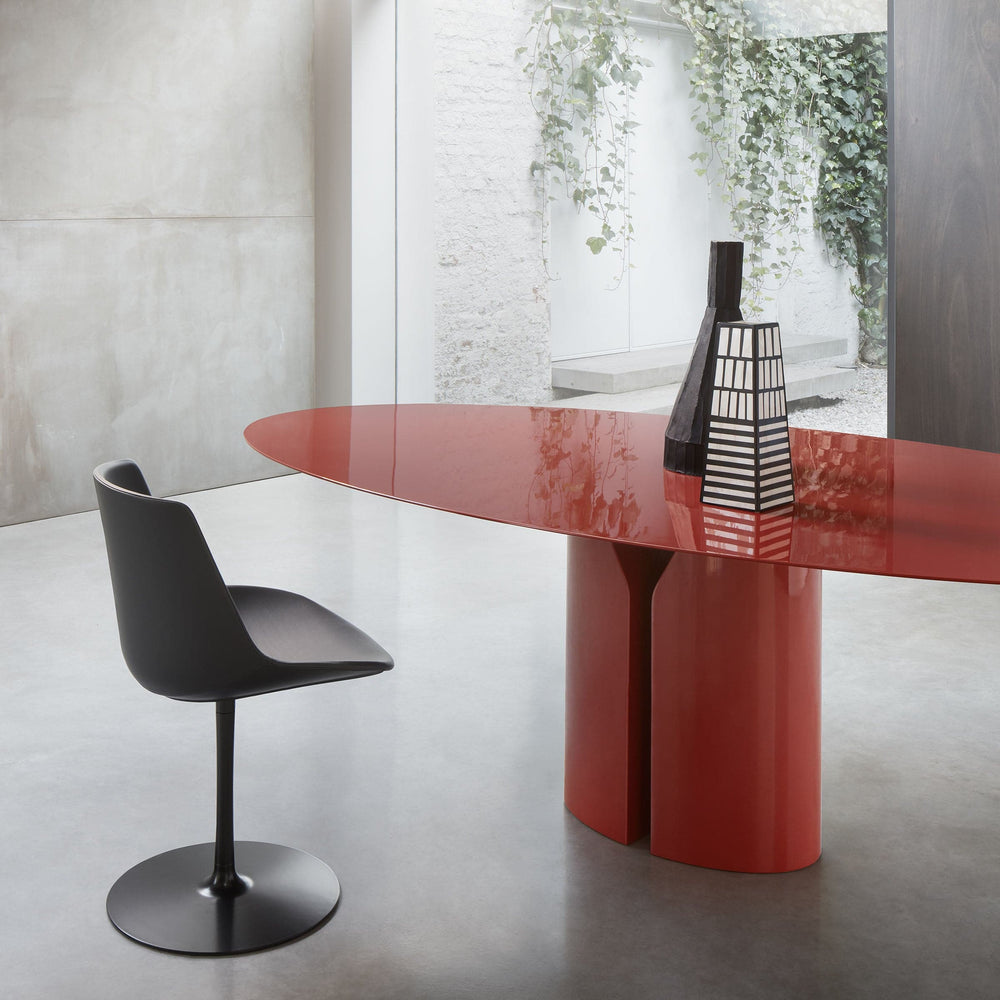SILK DISTRICT AND COMO: A STORY IN THE HISTORY OF TEXTILE
by Maria Laura Berlinguer
Como and the silk district: a story in the history of textile
One word - several varieties of precious fabrics
Just say silk and it immediately reminds us of light foulards caressing the skin, such as those selected by Design Italy. Many varieties of silk fabrics, from the manufacturing district of Como, have made Italy famous worldwide since the 18th Century: taffeta, organza, chiffon, damask, brocade and duchesse. A wide variety for just one fabric that stands for quality: Como’s silk. 95% of the whole Italian silk production and 80% of European silk production are carried out in Como, and the excellent quality of Italian silks is ensured by small enterprises, often family-run, where weaving is synonym with creating, giving life to, building a story of a manufacturing process that live and revives according to tradition.
Italian silk and Germany, a never-ending love
Among the women artists chosen by Design Italy to enhance Como’s silk traditional production, there is Stephanie Schenck, German by birth, but Italian at heart, since she actually moved to Italy to create her foulards matching floral and geometric patterns. Schenck’s story reminds of the origins of Como’s silk district: in the mid-18th Century, indeed, the main German fairs and the city of Vienna were the two markets absorbing most of the Italian production. At the crossroads between Milan and Northern Europe, Como’s geographical position well explains why the silk production process took root so fast. Today, Como still plays its role of raw material producer for Milan, the capital of fashion. Schenck’s foulards are living proof of this: modern design and hand-drawn pattern base to perpetuate the distinctiveness of a fabric that has to be tailor-made because it cannot be mass-produced, its essential features require low volume production.
Sky and water on a foulard, so the landscape becomes the protagonist
Silk and Como make up an inseparable pair and this is easy to be seen in Adima shawls, the brand founded by Alessandra Benetatos, who through all her shawls expresses an intimate search, a soul’s urge to find harmony with nature. Water is the absolute protagonist, primordial element pre-eminently symbolizing the birth. Benetatos draws her inspiration from water to start her regeneration journey, this is how the water effects on the large shawls become a dive into the lake to trace back her own origins and look for healing. The designer took her first steps in her family-run textile company and later, “being fascinated by water”, as she puts it, she transferred her meditations to silk. Every Adima shawl, Benetatos says, comes from a know-how “of the heart”. But, as in the case of Italian excellencies, passion always goes hand in hand with craft technique, because only being experienced in silk versatility one is able to transfer to fabric drawings that are snapshots of the exact moment when the mind rediscovers itself.
...and silk becomes a work of art
Those who want to make a design object out of a foulard can’t do without the silk printing techniques from Como’s district. This is the case of Jpc Universe who, in order to turn their motto “reaching the future through the past” into reality, reinterpreted a traditional material such as silk to make a work of art out of it. Their foulards, designed by contemporary artists, can be worn as the most classic garment, but they also look perfect set in a picture frame.
















